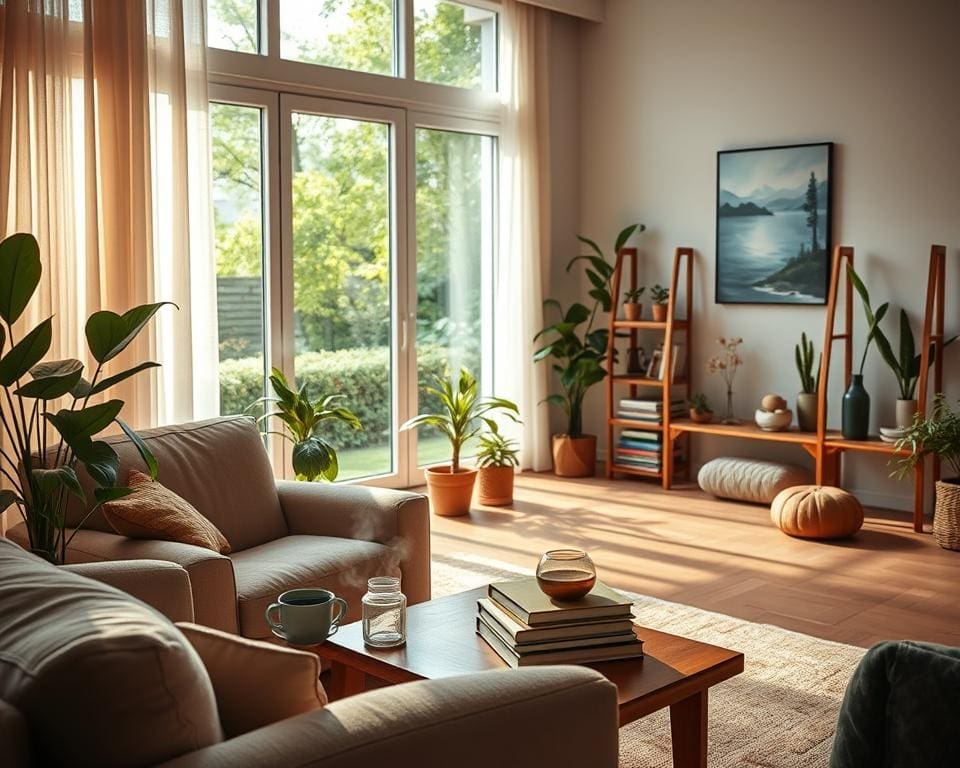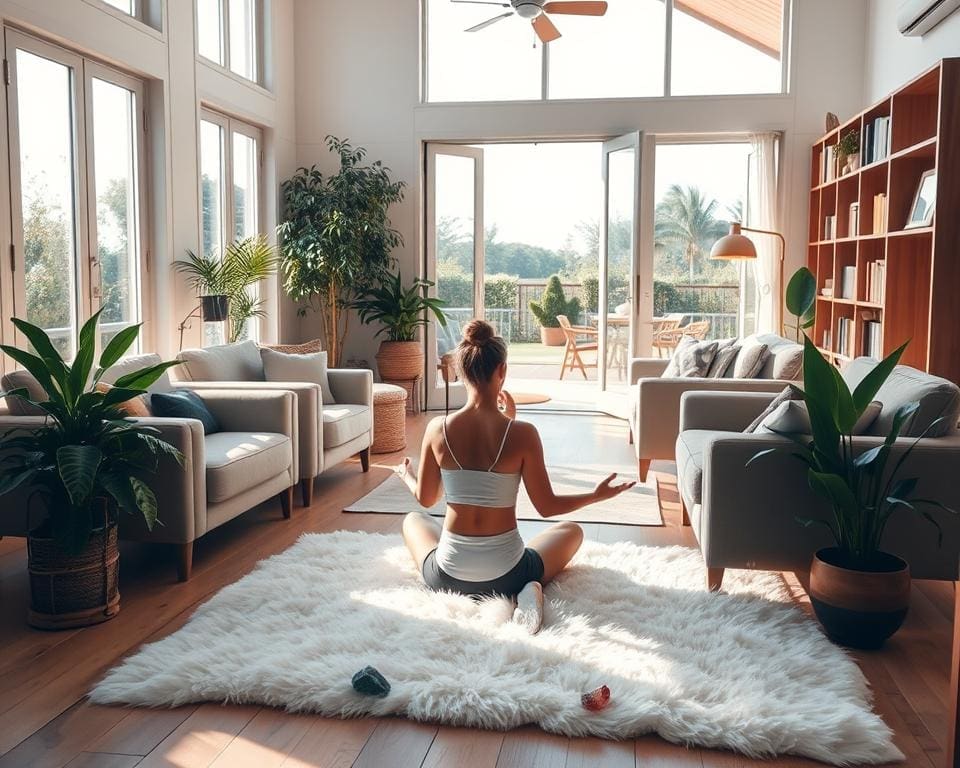In today’s fast-paced world, the significance of home wellness cannot be overstated. Our living spaces play an essential role in shaping our overall health and wellbeing, prompting us to ask, is your home your greatest wellness tool? The connection between the environment and health outcomes is profound, influencing mental clarity, emotional stability, and even physical health. Renowned architects like Frank Lloyd Wright have championed designs that prioritise both aesthetic beauty and wellness, inspiring a movement towards homes that nurture and heal. As you embark on the journey to enhance wellness at home, consider how your environment can become a transformative tool for a healthier, happier life.
The Importance of Home Wellness
Home wellness encompasses a multifaceted approach to creating spaces that foster mental, emotional, and physical health. Understanding home wellness involves recognising how the environment profoundly influences our wellbeing. Factors such as air quality, light, and cleanliness play significant roles in shaping our everyday experiences.
Understanding Home Wellness
The concept of home wellness goes beyond mere aesthetics. It focuses on cultivating an environment that serves as an emotional sanctuary and restorative retreat. Elements contributing to this include:
- Comfortable spaces that encourage relaxation
- Areas designed for social connectivity with family and friends
- Thoughtful layout promoting a sense of balance
Understanding home wellness is crucial to achieving a harmonious lifestyle. Each aspect of your living space can either enhance or detract from your overall health journey.
The Impact of Your Environment on Health
The impact of the environment on health is significant. Studies from the World Health Organisation indicate that poor living conditions can lead to elevated stress levels and various health issues. Consider the following statistics:
- Quality air contributes to 30% of respiratory health outcomes.
- Access to natural light can improve mood and productivity by up to 20%.
- A clean, organised space can elevate mental clarity and reduce anxiety.
Such insights underscore the necessity of prioritising home wellness. Your environment plays a vital role in shaping your overall health and wellbeing.

Is your home your greatest wellness tool?
Reflecting on the premise, “Is your home your greatest wellness tool?”, invites an exploration into how our living spaces can significantly influence well-being. Homes should evolve beyond mere shelters, becoming personalised sanctuaries that nurture mental and physical health. Creating an environment that promotes wellness at home entails intentional choices in decor, layout, and ambiance.
Consider the impact of colour schemes. Soft, calming hues can transform a space, fostering tranquillity and relaxation. Textures play a similar role; smooth fabrics and natural materials create a comforting atmosphere conducive to rest. Designated areas for hobbies or interests stimulate creativity and fulfilment, essential components of a balanced life.
Testimonials from families who have consciously redesigned their homes often highlight remarkable transformations. Families report improved moods and enhanced connectivity after rearranging their living spaces to cater to communal activities, such as game nights or shared meals. These personal stories underscore the potential of our environments to enhance overall health and happiness.
Creating a Healthy Home
Transforming your living space into a sanctuary of wellbeing involves embracing specific design principles for wellness. These strategies incorporate spatial planning, colour psychology, and furniture arrangements that encourage movement and social interaction. Experts in sustainable architecture, like William McDonough, highlight the necessity of environments that support health and vitality.
Design Principles for Wellness
Design principles for wellness focus on creating spaces that not only look aesthetically pleasing but also promote mental and physical health. Consider the following elements:
- Spatial Planning: Ensure that your home’s layout facilitates easy movement and interaction.
- Colour Choices: Opt for calming colours, such as soft greens and blues, to create a serene atmosphere.
- Furniture Arrangement: Arrange furniture to foster conversation and connection among family and friends.
Incorporating Natural Light and Greenery
Natural light and greenery play crucial roles in creating a healthy home. Integrating these elements not only enhances mood but can significantly improve productivity. Biophilic design leverages nature to foster a deeper relationship between occupants and their environment. Key benefits include:
- Enhanced Mood: Exposure to natural light elevates serotonin levels, contributing to a happier state of mind.
- Improved Productivity: A well-lit space encourages focus and drives creativity.
- Connection with Nature: Incorporating plants can reduce stress and create a serene indoor atmosphere.
Holistic Home Wellness Practices
Creating a serene environment within your home can significantly enhance holistic home wellness. Mindfulness and relaxation spaces are essential components of this approach. These zones promote mental well-being through the incorporation of calming elements that inspire tranquillity and reflection.
Mindfulness and Relaxation Spaces
To cultivate mindfulness, consider designing dedicated areas for meditation, yoga, or quiet contemplation. Integrating soothing elements such as:
- Aromatherapy through essential oils can stimulate relaxation
- Soft textiles like cushions and throws provide comfort
- Tranquil colours in decor create a peaceful atmosphere
These elements foster an environment conducive to mindfulness practices, allowing for deeper engagement with oneself and the moment.
Decluttering for Mental Clarity
The impact of your physical surroundings on your mental state cannot be overstated. Decluttering contributes significantly to mental clarity and is a crucial practice in holistic home wellness. Research shows that reducing clutter can lead to lower stress levels. Influential figures in this field, like Marie Kondo, champion minimalist living as a means to achieve organisation and serenity. Consider implementing the following strategies:
- Regularly assess belongings and let go of items that no longer serve a purpose.
- Organise spaces thoughtfully to retain functionality and a sense of peace.
- Establish a daily routine for maintaining an orderly environment.
Embracing these decluttering techniques creates a refreshing space that enhances overall well-being.
Improving Wellness at Home
Fostering a healthier living environment can significantly enhance overall well-being. By prioritising daily habits that encourage movement and embrace nutritious choices, one can transform their home into a sanctuary for wellness. Two vital aspects to explore are integrating movement into daily life and the role of nutrition in your living space.
Integrating Movement into Daily Life
Physical activity doesn’t have to be a chore. Transforming your home into a hub of activity can be both enjoyable and practical. Consider creating a dedicated space for exercise that encourages regular workouts or playful activities with family. Simple changes like incorporating active breaks during long work-from-home hours can stimulate both body and mind. Research indicates that increased physical activity levels elevate mental health and productivity, making movement vital to improving wellness at home.
The Role of Nutrition in Your Living Space
Your kitchen plays a pivotal role in shaping healthful eating habits. Thoughtfully designing the area where you prepare meals can foster better choices. Organising accessible storage for wholesome foods and creating meal prep stations promotes nutritious cooking behaviours. A well-designed kitchen acts as a catalyst for prioritising nutrition in your living space, encouraging healthier dining decisions and ultimately contributing to your overall wellness journey.
Wellness Design for Home
Creating a home that embodies wellness begins with thoughtful design and layout choices. This section delves into how the right furniture layout and the selection of healthier materials can significantly contribute to a nurturing environment.
Furniture and Layout for Comfort
Arranging furniture in a way that encourages comfort and relaxation is crucial for a wellness-focused home. Incorporating ergonomic designs not only elevates aesthetic appeal but also supports physical wellbeing. Open spaces, gentle curves, and soft textures invite individuals to unwind and connect. For instance, embracing modular seating can accommodate various activities, from family gatherings to quiet reading corners. Such arrangements facilitate movement and flow, making the home a space that nurtures both body and mind.
Choosing Healthier Materials
Selecting healthier materials for your home enhances the overall wellness design for home. Sustainable options like low-VOC paints and non-toxic flooring contribute to better indoor air quality, thus safeguarding health. Brands like IKEA showcase a commitment to environmental consciousness by offering eco-friendly materials that promote wellbeing. Opting for such products not only benefits occupants but also supports global sustainability efforts. When your home reflects a dedication to health through material choices, it resonates as a haven for all who inhabit it.
Enhancing Wellness Through Home Design
Intentional home design plays a crucial role in enhancing wellness through home design, as it directly influences our daily experiences and overall wellbeing. Simple modifications, such as altering layout configurations or selecting soothing colour palettes, can create an environment conducive to relaxation and mental clarity. Integrating elements from nature—like houseplants, natural light, and organic materials—not only breathes life into a space but also supports holistic home wellness practices that nurture both body and soul.
Architects and designers advocate for thoughtful design choices, emphasising that a well-planned home can significantly impact emotional health. For example, open spaces encourage free movement and communication, while cosy corners offer tranquillity. These factors, however small they may seem, accumulate to create an atmosphere that promotes a balanced lifestyle, reinforcing the idea that our homes can be the ultimate tools for wellness.
As you reflect on your own living environment, consider the ways you can adapt your space to align with your wellness goals. Whether it’s rearranging furniture for improved flow or introducing calming colours, each change can serve as a step towards a healthier home. Embrace the journey of enhancing wellness through home design, and allow your living space to manifest the peace and harmony you seek in life.









